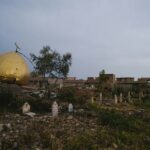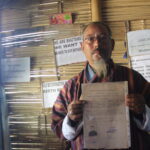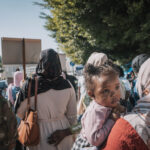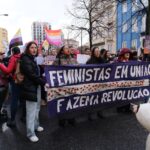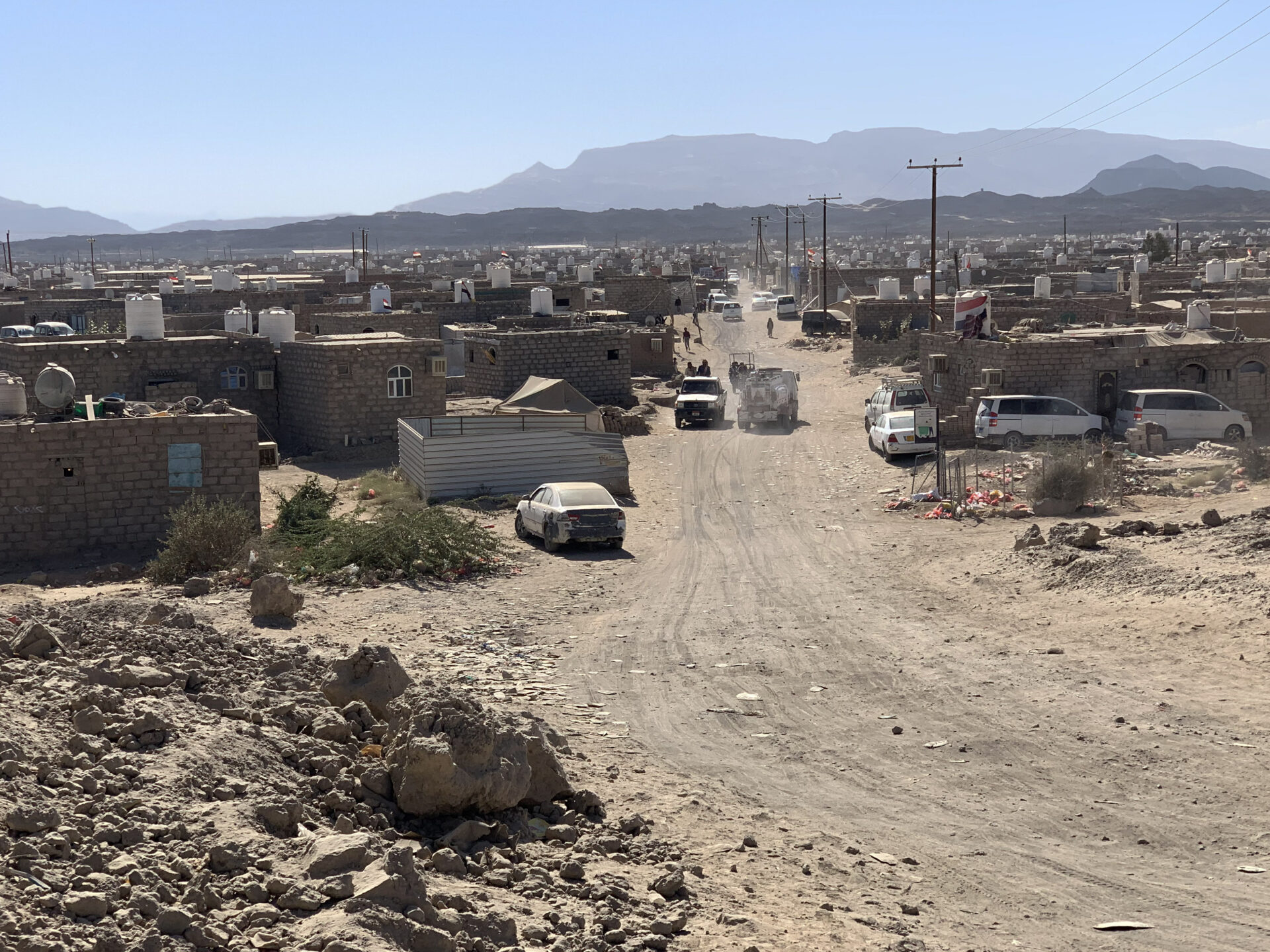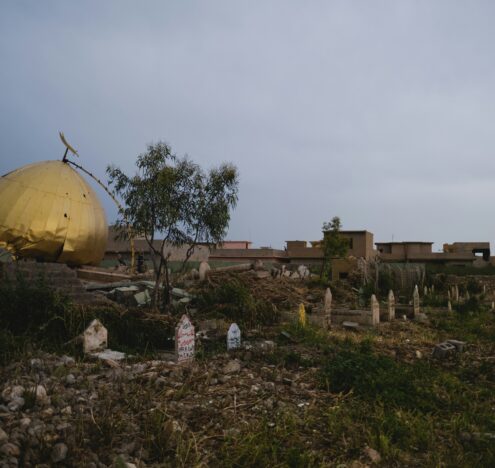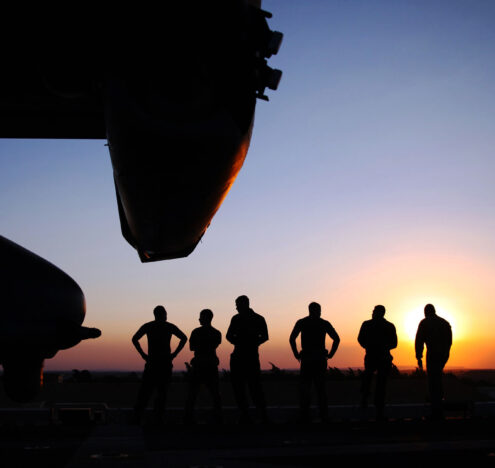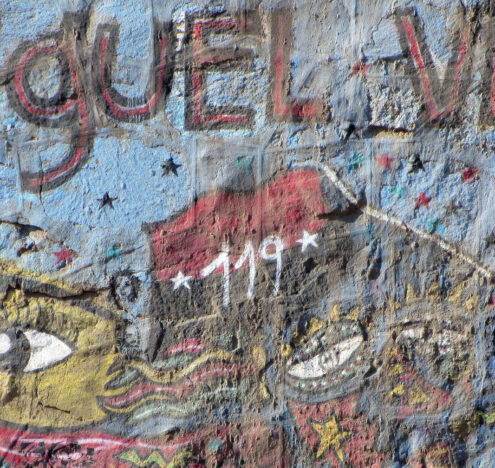A sword of Damocles hangs over the heads of Yemenis, reminding them of a state of “no war, no peace” that currently prevails in Yemen. While there is a perception that the country is still enjoying a period of relative calm since the end of the truce in October 2022, the Yemeni population continues to live in fear of being the so-called “collateral damage” of war.
During a short visit to Marib at the end of last month, I came across displaced families telling me how they keep fleeing from one displacement camp to another because of the ongoing missiles and drones falling nearby their tents, and, in one instance at least, on their children’s playground. One father brought me his son so I could see the scar on his face from a shrapnel wound.

Internally displaced children playing soccer in a refugee camp in Marib in January 2023.
While it’s true that the world is no longer witnessing — for the moment — a full-blown armed conflict in Yemen with hundreds of missiles, drone attacks, and airstrikes carried out on civilian targets, we should not minimize the risk of re-escalation if localized conflicts continue, and as long as parties to the conflict rely primarily on their guns.
It’s against this backdrop that a reported shipment of Iranian-supplied weapons and ammunition suspected of being bound for Houthis in Yemen was seized in January 2023 by a French warship. The US military also said Yemeni forces had recently seized 100 drone engines bound for Houthis. Yet, countries such as the United Kingdom, France, and the United States continue to sell weapons to Saudi Arabia even though the coalition harmed and killed thousands of civilians during its operations. With weapons flowing into Yemen to supply parties to the conflict, the prospect of peace may seem distant. Yet, it must be given a chance. The alternative has already been costly to Yemen, with several thousand civilians killed, maimed, and over 4 million displaced as a result of large-scale fighting.
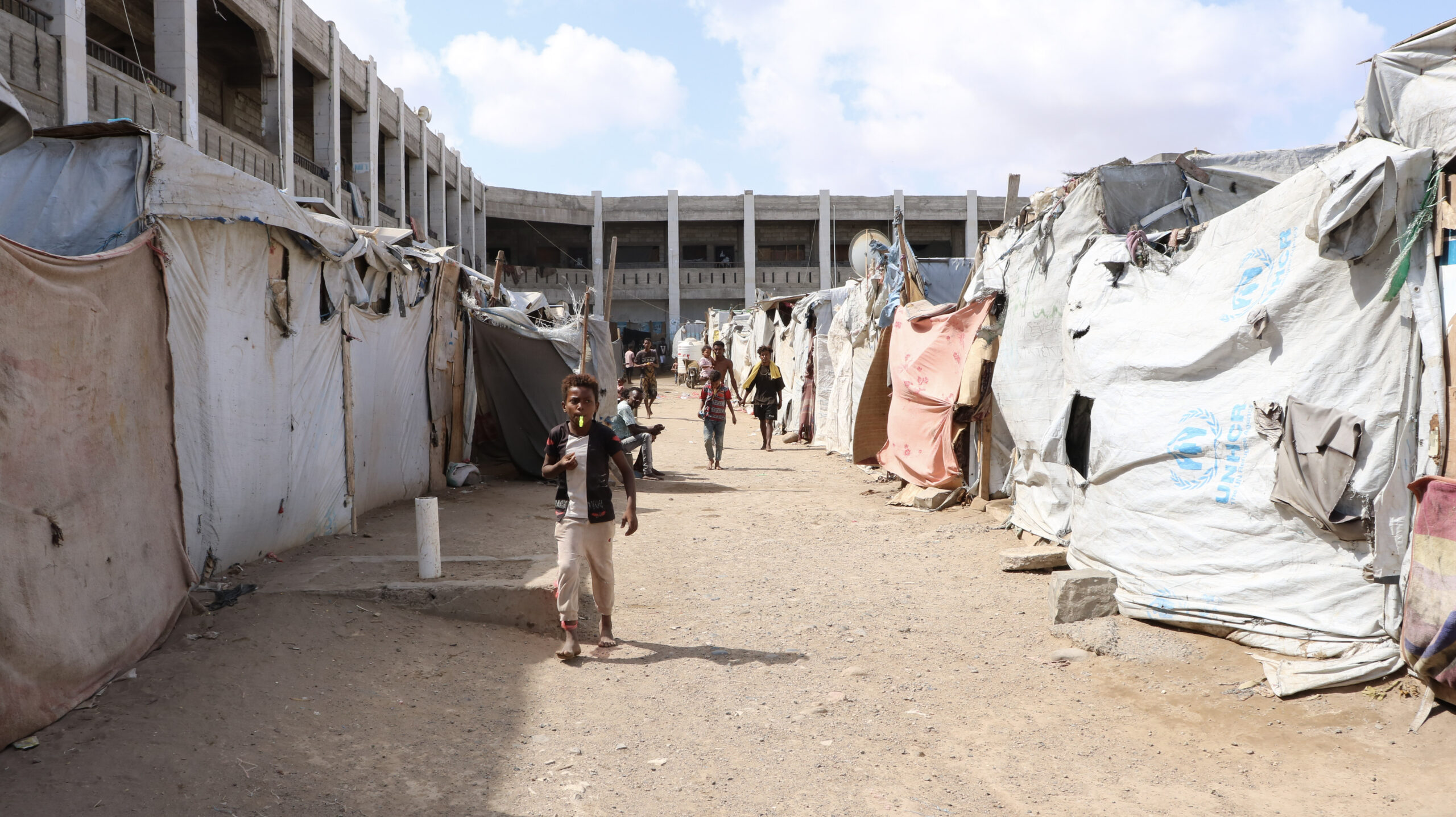
Displaced Yemenis in a UNHCR camp in Aden. January 2023.
A LONGER AND EXPANDED TRUCE COULD ALSO GIVE MORE TIME TO CONTINUE CLEARANCE OF LANDMINES AND OTHER EXPLOSIVE REMNANTS OF WAR TO PROTECT CIVILIANS FROM THE HARM THAT COMES UNDER THEIR FEET.
In 2023, nearly 22 million Yemenis are estimated to be in need of humanitarian aid and protection, according to the UN. This is two-thirds of Yemen’s population. Worse, more than 80% of the population struggles to access food, safe drinking water, and health services. With global prices rising from the war between Ukraine and Russia, prices have also skyrocketed in Yemen, pushing an already poor population into further poverty. Yemen imports more than 90% of its food and critical goods, making it extremely vulnerable to global market fluctuations and unstable currency.
Last month, the UN Special Envoy for Yemen Hans Grundberg indicated that regional and international diplomatic efforts were underway to end the conflict. The possibility of a new truce was on almost everyone’s lips when I visited Yemen in January 2023. However, there was a lot of caution. Yemenis have been there already, and a truce doesn’t always mean that safety and security prevail.
WHAT A TRUCE SHOULD BE
One female activist in Aden told my team and me that “the truce should be more than a lull in fighting that allows fighters to regroup and re-stock weapons,” while a Yemeni journalist confessed pessimistically that Yemen may be headed toward a “Libyan scenario” with a fragmented and divided country that may take years before reaching peace.
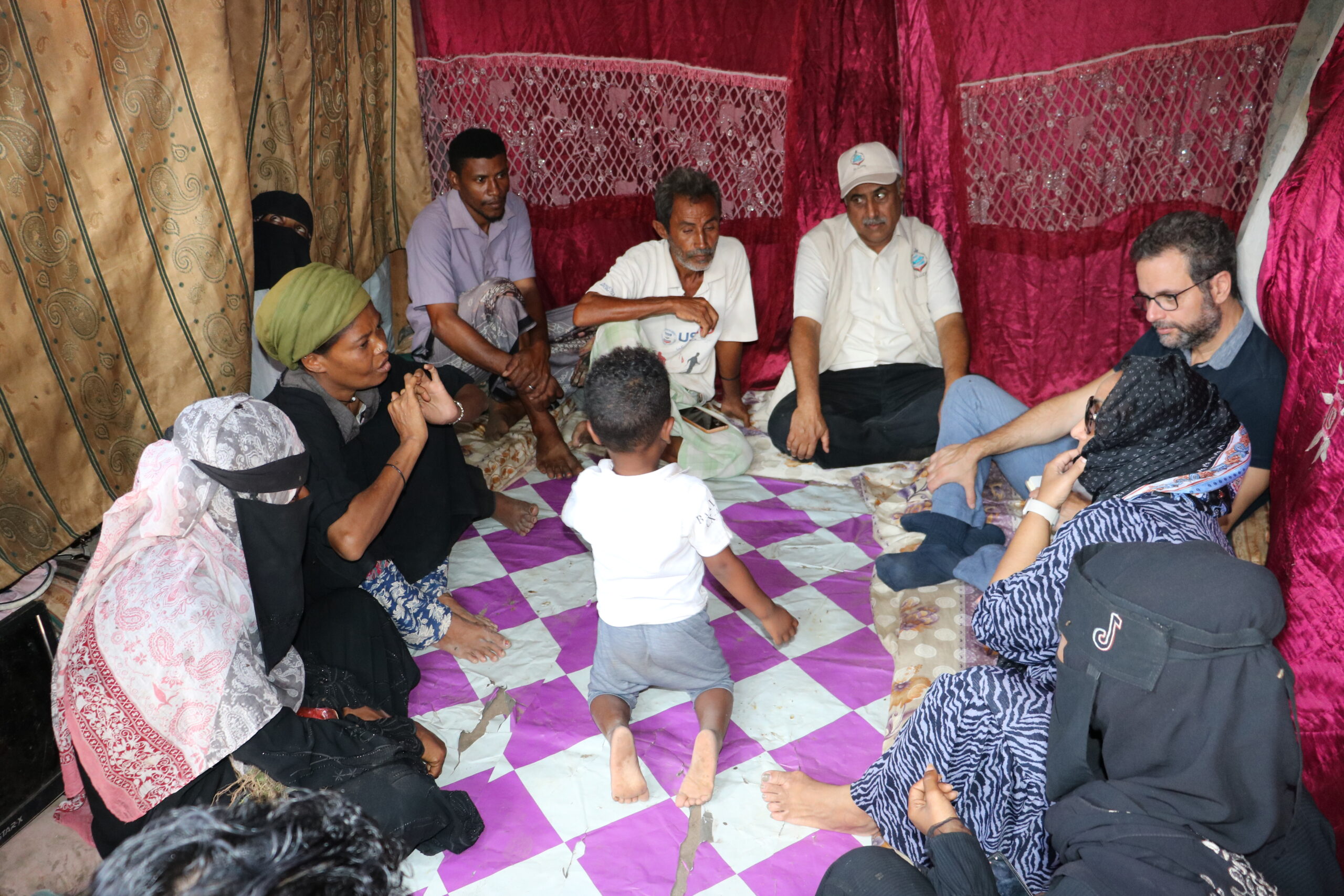
The Center for Civilians in Conflict team meeting internally displaced persons in Aden. January 2023.
While it’s unclear what the truce agreement may look like, the truce is not an end. It’s only a building block that should create the conditions for a conducive environment to a national ceasefire and, eventually, a political settlement to reach a comprehensive, inclusive, and durable peace agreement.
Yemenis are tired of the uncertainty and worried about what tomorrow may bring. Those we spoke to asked for a strong monitoring system to ensure the truce is rapidly implemented and respected nationwide and to hold accountable the spoilers of peace. Negotiators of the truce should also consider a truce with a longer duration — instead of the three-to-six-month period agreed upon in 2022 — and with expanded terms, including an assurance that women, youth, and civil society will be included in the discussions.

Shelled civilian building in Aden. January 2023.
It is important to acknowledge that the six-month truce in 2022 offered a slight relief to Yemenis with more fuel ships entering Al Hudaydah port, allowing hospitals and businesses greater access to fuel and helping public services to function more easily. It’s also reported that the number of civilian casualties because of large-scale fighting dropped between April and October 2022. According to the Social Impact Monitoring Project, civilian casualties decreased by 58% between the first quarter of 2022 (January-March) and the second quarter (April–June). This was largely attributed to the decrease in shelling incidents and air strikes.
WHAT A TRUCE WOULD ALLOW
In Yemen, when the threat doesn’t come from the sky in the form of missiles and airstrikes, it comes from the ground with landmines and other explosive remnants of war ready to detonate. Yemenis we met in Marib noticed an increase in incidents related to explosive devices during the 2022 truce. In fact, the highest proportion of casualties since the truce started in April 2022 comes from explosive remnants of war, increasing by about 60% since 2021. This is not surprising because of the widespread and indiscriminate use of landmines along Yemen’s western coast has been a common tactic of war employed by the Houthis since mid-2017, killing and injuring thousands of civilians.
The widespread use of landmines by the Houthis appears to be used intentionally to harm civilians. They have been laid in farmlands, villages, wells, roads, and around camps for internally displaced persons. These explosives have prevented humanitarian organizations from reaching communities in need in Yemen, starving civilians through aid deprivation.
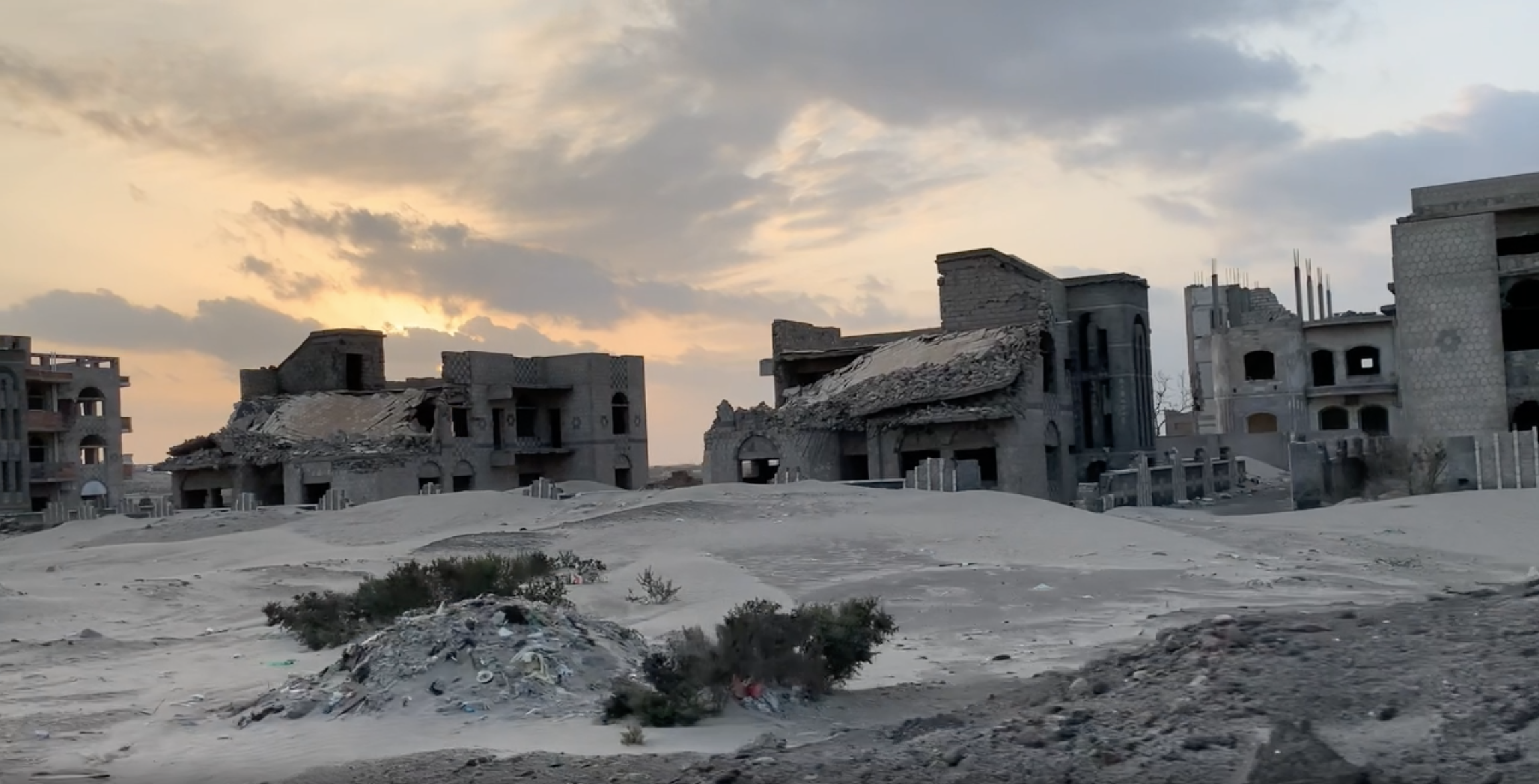
Yemen’s soil is heavily contaminated with explosive remnants of war, especially in parts of the country under or previously under Houthis’ control. This means the threat is everywhere, and by the time it’s been detected, it’s probably too late. A longer and expanded truce could also give more time to continue clearance of landmines and other explosive remnants of war to protect civilians from the harm that comes under their feet. It could also improve access to inaccessible areas to assess the extent of soil contamination by explosive remnants of war and launch a demining action plan nationwide.
The war in Yemen is about to enter its ninth year in March 2023, yet it doesn’t need to turn into a decade-long conflict. No efforts should be spared to bring peace to Yemen, and it starts by silencing all guns once and for all. A resolution will also require a lot of political courage from all parties to the conflict. It will require them to put the interest of the Yemeni people above anything else. The statistics and images out of Yemen will never fully convey the sheer human suffering of the Yemeni people. They are undoubtedly the ones who have borne the brunt of the conflict. It’s time to give them a chance to build a safe future and raise their children in peace and security.



